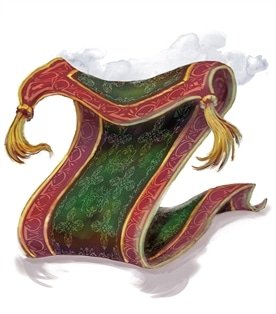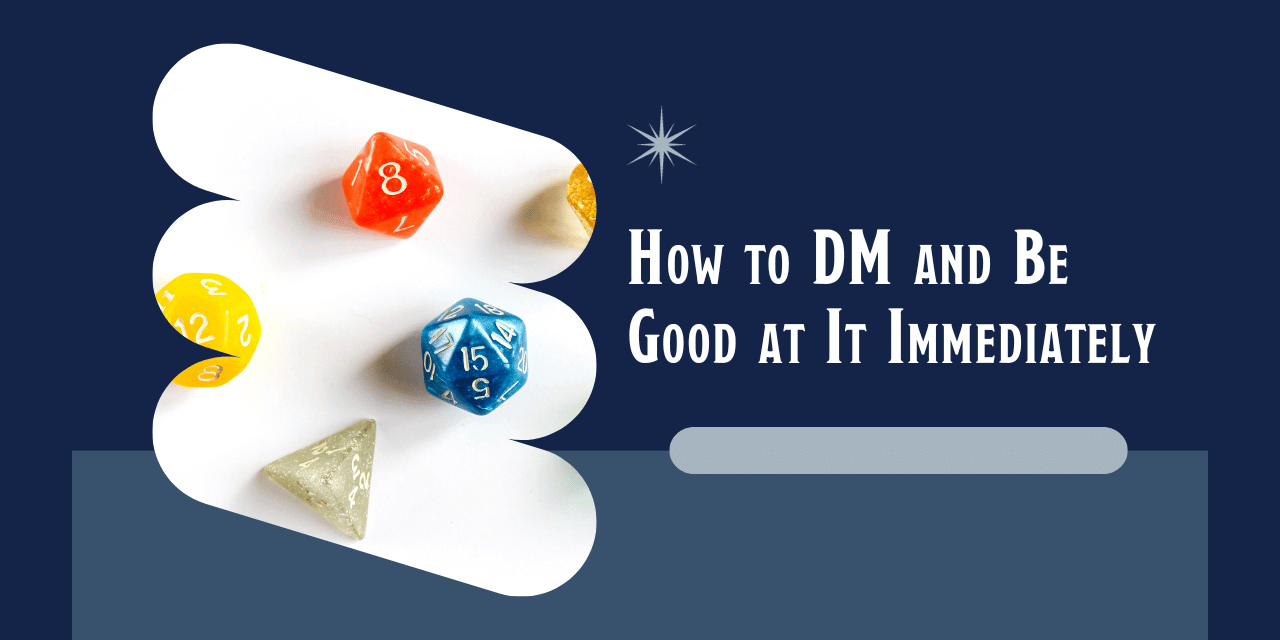So you want to learn how to DM, huh? Well, you've come to the right place.
I don't remember exactly when I learned how to DM, but it was about 20 years ago when I was in college and started with Third Edition (3e). I learned how to DM Dungeons & Dragons 5e because of the pandemic. I had been away for a while, and I hadn't really even played since 4th edition. I'm not a forever DM, but I spend more time behind the screen than in front of it.
Whether you're new to D&D entirely or are just looking to level up your player skills and learn to be a DM along the way, these tips and tricks will set you on the path to creating unforgettable adventures and weaving epic tales.
5 Simple Tips to Learn to DM:
While they're in no particular order, you can click any of the links below to check out the details of that particular section.
1. The Introductory Materials Aren't Always Introductory
Case in point: Ochre Jelly. These things are nasty little buggers, and the Dragon of Icespire Peak adventure in the Essentials Kit throws them at your fledgling adventurers like they're wee little bunnies. They're not.
Take a look at this stat block:

Not only are they immune to slashing damage (you know, swords!) and if someone does slash it with a sword, they split in two! So no damage, and there are more of them.
Oh, and they can't be blinded, charmed, deafened, exhausted, frightened, or knocked prone. Ugh. My party had an easier time with a Gelatinous Cube than an Ochre Jelly. And that's just silly.
So if you start a new adventure, read the monsters, know your party, and make sure that you adjust them so that your party can have fun fighting them. Because some of them just aren't fun for new players or new DMs.
If you're looking for some good, easy-to-DM intro adventures, check out my list of the best free D&D one shots.
2. It's Okay to Ignore the Adventure Text
In Dungeons & Dragons, while numbers and stats are important, the real fun lies beyond them. Take combat, for example. It's a chance for players to fight epic battles and cast powerful spells. But if fights drag on and become repetitive dice-rolling exercises, it's no longer enjoyable.
As the Dungeon Master, you have the power to make the game exciting. You can decide who lives and who dies, whether it's players, non-player characters, or monsters. Sometimes, it's perfectly fine to make things happen, almost like a godly intervention. For instance, you can make a group of foes drop dead, even if they have a bit of health left. Or you can make a creature flee wen the adventure says it won't.
I'll share a personal experience. In one of my sessions as DM for Dragon of Icespire Peak, we were following a quest where players encountered a young white dragon. The rules said the dragon would back off if it took 10 damage.
Okay, cool. Makes sense.
But my party's ranger shot the dragon for 8 damage, and according to the text, the dragon should have continued attacking.

I decided it was more exciting for the dragon to retreat. That gave the party a victory (and a victory over a dragon, at that), and they were able to see themselves as powerful.
If you want to know how to DM, that's all it takes. That sort of thing is all it takes to move an adventure from being mediocre to memorable. I mean, would you rather plunk a dragon in the neck once and scare it off or spend a few turns trying to make attack rolls for a piddling 2 damage?
The players had a great time, and that's what matters.
3. Mix Easy and Hard Enemies
If your adventure is full of only tiny goblins or critters that your party obliterates quickly every time, things will get a bit boring for them. But if every encounter requires them to take a long rest afterward, you're tuning too far in the opposite direction.
With that in mind, making sure that you have at least a few monsters in each group that can be quickly dealt with makes your heroes feel powerful, and the meatier baddies feel that much more important.
The same applies to overall encounters, too. A few quick skirmishes and a couple of harder battles are great. During a recent session, my party found a treasure room with 4 chests in the corners and a rug in the middle of the floor. There were some tables and chairs scattered around.
The party was very about the chests because they might be Mimics.
But I tricked them! The rug was a Mimic! So were the chairs! (Many things can be Mimics, ya know?) It engulfed the poor ranger who stepped on it not even thinking about it and wound him up being an elf burrito. Since they're adhesive, as the party tried to beat him out of it (which was hilarious), their weapons stuck to it, one by one. It was great fun. For me. (And them.)

Once the party had beaten that, I had a gelatinous cube fall from the ceiling as they approached one specific chest. And their rolls were so poor that they actually got sucked into it a few times. And you know what? It did maximum damage. I could have fudged the numbers and gone easy on them.
But after the dragon and another couple of encounters where they cleaned up handily, I wanted them to feel like they were still in danger.
Like a good musical where you need a slow song after a really raucous one, alternating and mixing up the battle tempo can keep your adventurers on their feet better than going all the way to one extreme or the other. As you practice and continue to learn how to DM, you will get a pretty solid feel for the tempo your group performs the best at.
4. Let the Players Tell YOU What Happened
A good DM really sets the scene and describes what's going on. After all, this is a TTRPG, and all anyone can see is what you put in front of them, figuratively or literally with maps and minis.
So with that in mind, a player might say, “I hit the monster for 8 piercing damage.” And then you could describe that hit: “You sink an arrow into the soft flesh under the young white dragon's chin. It screams and wheels in the air, retreating before it can be injured further.”
But in other situations, have you ever thought about letting the player tell the DM what happens? Sure, you ask them what they're doing, but on a success, think about letting them actually narrate how it goes.
Especially on these sorts of situations:
- Rolling a natural 20. Any time the player rolls a natural 20 in combat, get want them to describe what they do to the enemy. I let them know beforehand if the damage is enough to kill the monster, and even if it doesn't, 9 times out of 10, their description will be better than mine.
- When a major enemy dies or a situation reaches its end. In one case, my wife was playing Aasimar Paladin and rolled incredibly well and did the final damage to the Sea Hag at the end of the adventure. I handed her the reins and she proceeded to, and this is a direct quote, “whap whap whap whap whap whap whap whap whap whap rapid fire beat her with my wings“, physical miming and flapping included. I would certainly not have gone that direction, but I am so glad she did.
- When a rare roll or hard saving throw succeeds. Maybe the PC took a 1 in 100 shot at an enemy from across the island and they somehow landed it. Or tripped a barbarian with a bola from a hundred yards. Or maybe they beat a 22 DC Strength check. Heck, maybe they just want to do something and you want to let them tell you the story for a change. Whatever it is, when something extraordinary happens to them, let them decide how it plays out. In almost every situation, they'll improve the narrative in a way a DM just can't.
5. Reward Critical Thinking and Alternate Approaches
While combat is incredibly fun, sometimes it's just as much (or more) fun to handle situations in atypical ways. Sometimes that's using stealth to get a jump on enemies and take them hostage. Other times, it might be trying to dropkick them into lava or toss the gnome party member at them like a bowling ball.
Whatever they want to do, as a DM, you can allow it. And if it's cool enough, you can reward them extra for it.
I had a baddie in this particular session who was a few CR ahead of my party. I didn't necessarily expect them to fight it, and if they did, I had thought I might make the NPC leave almost immediately. What happened instead was that our Wizard cast “Sleep” on it, got a fantastic roll, and the Ranger used his Pseudodragon and Stealth proficiency to tie up this particular monster.
Not only did I like the way they thought, but their rolls hit the high DCs that I had set. So…I let them basically bypass the battle because of this, and they took care of the enemies as they saw fit.
And here's the important part: I rewarded them for it. Mainly, I gave them the extra 1,800 XP for the baddie that I was going to have leave and not even be a real part of the encounter. However, because they were able to handle the encounter in a way that did incorporate the monster, they got an extra 1,800 XP.
Now You Know How to Be a DM!
Remember, we all do this for fun. I assume you want to learn how to be a DM because you want to tell stories, hang out with friends, escape the real world, and kick some fantasy monster booty with dice.
While it's absolutely necessary to take the game seriously and follow the rules, it's also up to you as the Dungeon Master to make sure that the rules are enforced in a way that is fun and challenging, not arbitrary and rigid.
Learning how to DM well isn't about memorizing all the rules and making sure they're followed 100% of the time. It's about making memorable experiences.
I mean, otherwise, we're just doing math and yelling a lot about it.
How did you learn to be a DM? What tips and tricks can you give new people who want to learn how to DM?

